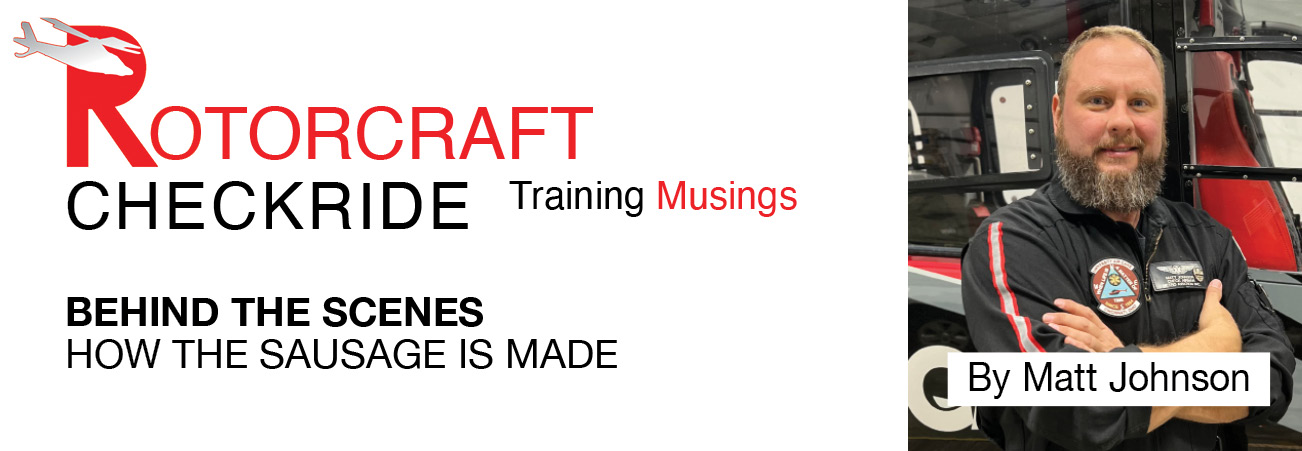|
Aug
27
2025
|
|
Posted 124 days ago ago by Admin
|
|

Don’t tell my AME, but I love sausage (OK, actually I love bacon, but bacon doesn’t fit my analogy. Don’t fret, my column isn’t going to be about breakfast meats, nor my diet for that matter. Instead, I want to talk about how things are made or derived behind the scenes as it relates to electronic aviation applications (apps). Just like breakfast meats, which are tasty and a breakfast staple for many of us, we don’t always know how that food was processed behind the scenes, and frankly, I don’t care to see how sausage is made! However, I do care about how various aviation apps derive their calculations, as you should care as an applicant for any practical test. Let me explain! I’ll warn you, this month's column is packed full of questions, and if you don’t know the answers, I suggest you figure them out before your next practical exam.
Before I get too deep, I want to add a quick disclaimer here. I am not opposed to electronic flight bags (EFBs); I absolutely love utilizing them on a daily basis, both as a Designated Pilot Evaluator and as a single pilot IFR air medical captain. I couldn’t imagine in today's aviation age not using EFBs and still being able to maintain the same level of effectiveness and efficiency. The debate regarding EFBs and practical exams was finally settled last May with the introduction of the Airman Certification Standards for us on the helicopter side of the industry. Prior to this, the allowance of whether EFBs and apps could be utilized during the practical exam seemed to be on a case-by-case basis, depending on the evaluator. Now, we have clear guidance. Here’s an example: in the Private Pilot ACS, we find the following statement under Task D, Cross-Country Flight Planning: “Note: Preparation, presentation, and explanation of a computer-generated flight plan is an acceptable option.” If that isn’t convincing enough, continue on to the Risk Management section of this task and note that one of the items reads “Use of an electronic flight bag (EFB), if used.” This statement Indicates that your EFB is one of the items that a DPE can ask about if you use an EFB. Remember we must ask about at least one item! To further drive home the point, take a look at the Skills section of Task D, where it reads: “The applicant exhibits the skill to: Use an electronic flight bag (EFB), if applicable.” So, if you plan on using your favorite flight planning app on an iPad (EFB) during your practical exam, then you must know how to use it! (As a reminder, under the “Skills” area: ALL elements must be evaluated.)
For even more clarification, let’s jump to “Appendix 3: Aircraft, Equipment, and Operational Requirements & Limitations” found in the back of the Private Pilot ACS, and you will find the following statement:
“If the applicant has trained using a portable electronic flight bag (EFB) to display charts and data, and wishes to use the EFB during the practical test, the applicant is expected to demonstrate appropriate knowledge, risk management, and skill appropriate to its use.”
So, what about how the app is made or how it works? This is where weaknesses are observed in relation to EFBs. Take, for example, the Cross-Country Planning portion; that magenta line that you see from Point A to Point B on your popular app: Is that line a True Course or Magnetic Course? What's the difference? Does it matter? Of course it does! What makes these apps so powerful is they do most everything for you behind the scenes, but, what if all you had was a paper sectional and had to figure out a Magnetic Course from a True Course based on the closest isogonic line? Speaking of sectionals, what if you see a symbol that you don’t know the meaning of: You do know where to find the legend in the app, right?
Here’s another area where I often encounter an applicant stress point: basic weight-and-balance calculations. I get it, the apps are fast, easy and often incorporated in an all-in-one flight planning package that makes them convenient. However, at any applicant level you need to know the basic arithmetic involved in calculating total weights, moments, and of course a CG, both longitudinal and lateral.
I would be remiss if I didn’t close out with one more critical item: Performance! While the app processes in milliseconds, you still need to know where to find those in and out of ground-effect hover charts in your Rotorcraft Flight Manual. What three variables do you need to know the hover performance capability? Given a set of hypothetical variables, you do know how to determine that information with a “raw” chart, right?
I think you get the point. Apps are amazing, they make our lives easy and efficient when used correctly, but when your EFB isn’t available (because your iPad overheats, dies, etc.) you need to know how to make your own sausage.
READ MORE ROTOR PRO: https://justhelicopters.com/Magazine
WATCH ROTOR PRO YOUTUBE CHANNEL: https://buff.ly/3Md0T3y
You can also find us on
Instagram - https://www.instagram.com/rotorpro1
Facebook - https://www.facebook.com/rotorpro1
Twitter - https://twitter.com/justhelicopters
LinkedIn - https://www.linkedin.com/company/rotorpro1